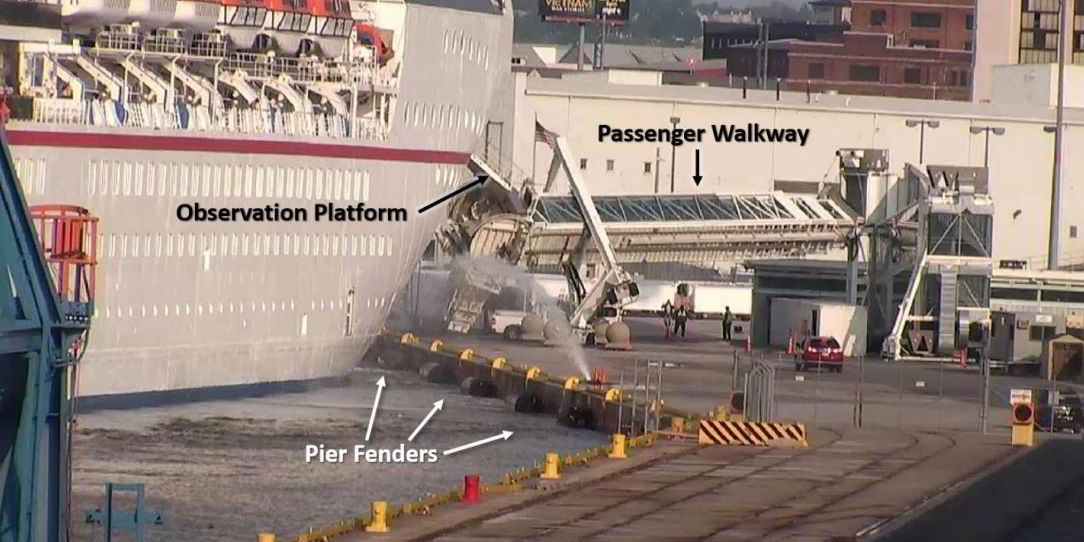The staff captain of a Carnival cruiseship was unable to slow the vessel's approach quickly enough to avoid a clash with a pier, a US government investigation found.
The staff captain was attempting to switch from joystick control to manual control of the ship at the time of the accident.
The result was $2.1m in damages, including a passenger walkway, cars on the pier and cosmetic damage to the vessel.
The 2,124-berth Carnival Pride (built 2001) was returning to the US Port of Baltimore after a seven-day cruise. During its transit in Chesapeake Bay, a local pilot boarded to guide the vessel into the Cruise Maryland Terminal, according to a report from the National Transportation Safety Board (NTSB).
The pilot, with 20 years experience, steered the ship through a channel toward the dock. But through an agreement with Association of Maryland Pilots and the passenger vessel berthing at the terminal, the final docking is conducted by a ship's officer.
In this case, the staff captain, the second in command on the vessel, was conning the ship. The staff captain took control of the vessel at the starboard wing console, controlling the ship's engine and steering via a joystick.
The ship approached the dock at too steep an angle and at too high a speed. The pilot told the staff captain, "you need to slow down."
The staff captain responded by trying to switch to manual control to better manoeuvre away from the dock. The captain eventually took control of the ship, and tried to put in back thrust to slow the ship's approach.
However, the ship's bow and observation platform struck the elevated walkway, which collapsed unto three vehicles underneath.
The NTSB report said the staff captain allowed the vessel to "approach the pier too fast and at an angle too steep because he misjudged the power available in the joystick mode for correcting the manoeuvre."



